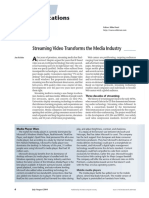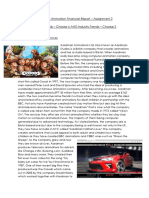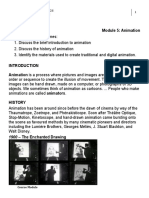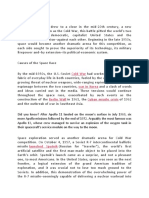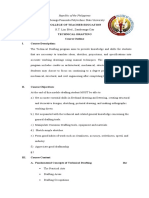0% found this document useful (0 votes)
189 views7 pagesWhat Is Animation.
Animation is the process of bringing illustrations or objects to life through motion pictures. Early forms of animation included depictions of movement on Greek pottery. The history of animation extends far beyond film. Some early examples that created moving images included the magic lantern in 1603, the thaumatrope in the 19th century, and the phenakistoscope in 1833. Émile Reynaud's Pauvre Pierrot from 1892 is often considered the first animated film due to its use of 500 hand-painted images, though some credit Émile Cohl's Fantasmagorie from 1908 as the first true animated movie using traditional techniques. Walt Disney's Snow White and the Seven Dwarfs from 1937 was the
Uploaded by
John Rafael Monteverde AcuñaCopyright
© © All Rights Reserved
We take content rights seriously. If you suspect this is your content, claim it here.
Available Formats
Download as DOCX, PDF, TXT or read online on Scribd
0% found this document useful (0 votes)
189 views7 pagesWhat Is Animation.
Animation is the process of bringing illustrations or objects to life through motion pictures. Early forms of animation included depictions of movement on Greek pottery. The history of animation extends far beyond film. Some early examples that created moving images included the magic lantern in 1603, the thaumatrope in the 19th century, and the phenakistoscope in 1833. Émile Reynaud's Pauvre Pierrot from 1892 is often considered the first animated film due to its use of 500 hand-painted images, though some credit Émile Cohl's Fantasmagorie from 1908 as the first true animated movie using traditional techniques. Walt Disney's Snow White and the Seven Dwarfs from 1937 was the
Uploaded by
John Rafael Monteverde AcuñaCopyright
© © All Rights Reserved
We take content rights seriously. If you suspect this is your content, claim it here.
Available Formats
Download as DOCX, PDF, TXT or read online on Scribd
/ 7














